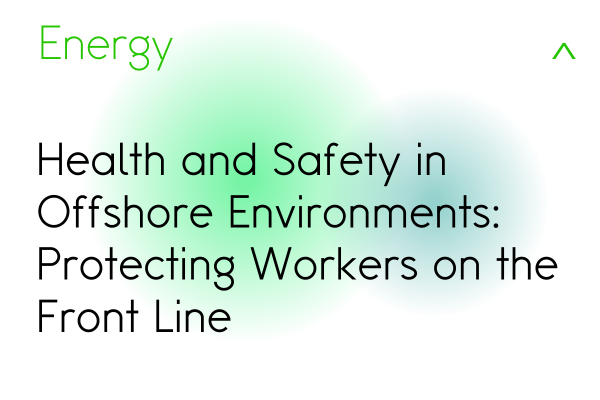Health and Safety in Offshore Environments: Protecting Workers on the Front Line
28 Oct, 20242minsHealth and Safety in Offshore Environments: Protecting Workers on the Front LineThe offshore...

Health and Safety in Offshore Environments: Protecting Workers on the Front Line
The offshore energy sector presents some of the most challenging working environments imaginable. Picture yourself 100 meters up a wind turbine in the North Sea, or on a platform dozens of miles from shore - these scenarios demand exceptional safety standards and robust protective measures.
The Foundation of Offshore Safety
At the heart of offshore safety lies a comprehensive approach that goes far beyond simply following rules and regulations. It's about creating an environment where safety is woven into every action and decision. The industry has learned - sometimes through hard lessons - that safety must be the cornerstone of all operations.
Working at Height: A Critical Challenge
One of the most significant risks offshore workers face is working at height. Whether maintaining wind turbines or servicing platform equipment, these tasks require meticulous attention to safety. Modern safety systems include:
• Advanced fall protection equipment
• Rigorous training programs
• Emergency rescue protocols
• Regular equipment inspections
But it's not just about having the right equipment - it's about using it correctly every single time. As one offshore worker put it, "You're only as safe as your last safety check."
The Maritime Element
Working offshore means constantly dealing with the challenges of the marine environment. The interaction between vessels and structures presents unique risks that require specific safety measures. These include carefully planned personnel transfers between boats and platforms, comprehensive weather monitoring, and emergency response procedures for potential scenarios like man overboard situations.
Building a Culture of Safety
Perhaps the most crucial element in offshore safety is creating and maintaining a strong safety culture. This isn't something that happens overnight - it's built through consistent effort and commitment at all levels.
Leadership and Commitment
Leaders must demonstrate unwavering commitment to safety through both words and actions. This means investing in proper equipment, training, and systems while also being visible in safety discussions and activities.
Worker Engagement
The most effective safety programs actively involve workers in safety decisions and improvements. After all, they're the ones on the front line who often best understand the practical challenges and potential solutions.
Health Considerations: Beyond Physical Safety
Working offshore isn't just about physical safety - it's also about maintaining health and wellbeing in a challenging environment. Extended periods away from home, shift work, and the physical demands of the job all need to be carefully managed. The industry has developed comprehensive approaches including:
• Regular health screenings
• Mental health support services
• Fatigue management programs
• Proper rest facilities and rotation schedules
Technology and Innovation
Modern technology is revolutionizing offshore safety. From advanced weather monitoring systems to real-time safety monitoring equipment, new tools are making it easier to identify and manage risks. Virtual reality training systems are allowing workers to practice emergency scenarios safely, while improved communication systems keep teams better connected than ever.
Emergency Response and Preparedness
Despite all preventive measures, the offshore industry must be prepared for emergencies. This means maintaining comprehensive emergency response plans, regular drills, and ensuring that all personnel are fully trained in emergency procedures. The remote nature of offshore installations means that self-sufficiency in emergency situations is crucial.
Looking to the Future
The offshore energy sector continues to evolve, and with it, safety practices must adapt. New technologies, changing energy sources, and expanding operations all bring fresh challenges. However, the industry's commitment to safety remains constant, with continuous improvement being a key focus.
Conclusion
Creating safe offshore working environments is a complex challenge that requires constant vigilance, commitment, and innovation. It's about combining robust systems and procedures with a strong safety culture where everyone takes responsibility for their own safety and that of their colleagues.
Success in offshore safety isn't measured just by statistics or compliance records - it's measured by every worker returning home safely after their shift. As the industry continues to evolve, maintaining and improving safety standards remains the top priority, ensuring that offshore energy production can continue to meet society's needs while protecting its most valuable asset - its workforce.
Through continued focus on training, technology, and culture, the offshore industry works tirelessly to maintain its position as a leader in workplace safety, setting standards that other industries often look to emulate.
Mane Energy have made a commitment that we will only work with organisations who prioritise worker safety.


